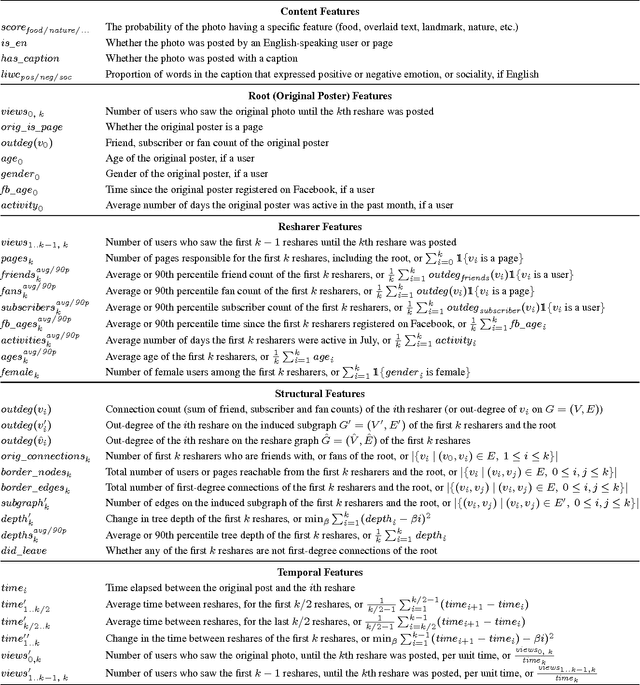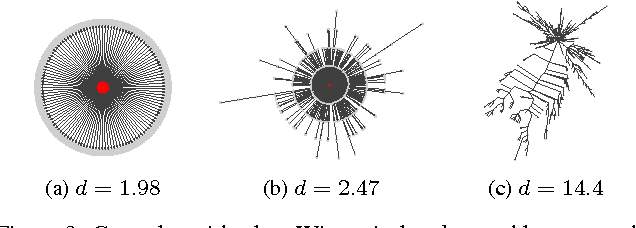Lada A. Adamic
Can Cascades be Predicted?
Mar 18, 2014



Abstract:On many social networking web sites such as Facebook and Twitter, resharing or reposting functionality allows users to share others' content with their own friends or followers. As content is reshared from user to user, large cascades of reshares can form. While a growing body of research has focused on analyzing and characterizing such cascades, a recent, parallel line of work has argued that the future trajectory of a cascade may be inherently unpredictable. In this work, we develop a framework for addressing cascade prediction problems. On a large sample of photo reshare cascades on Facebook, we find strong performance in predicting whether a cascade will continue to grow in the future. We find that the relative growth of a cascade becomes more predictable as we observe more of its reshares, that temporal and structural features are key predictors of cascade size, and that initially, breadth, rather than depth in a cascade is a better indicator of larger cascades. This prediction performance is robust in the sense that multiple distinct classes of features all achieve similar performance. We also discover that temporal features are predictive of a cascade's eventual shape. Observing independent cascades of the same content, we find that while these cascades differ greatly in size, we are still able to predict which ends up the largest.
Information Evolution in Social Networks
Feb 27, 2014



Abstract:Social networks readily transmit information, albeit with less than perfect fidelity. We present a large-scale measurement of this imperfect information copying mechanism by examining the dissemination and evolution of thousands of memes, collectively replicated hundreds of millions of times in the online social network Facebook. The information undergoes an evolutionary process that exhibits several regularities. A meme's mutation rate characterizes the population distribution of its variants, in accordance with the Yule process. Variants further apart in the diffusion cascade have greater edit distance, as would be expected in an iterative, imperfect replication process. Some text sequences can confer a replicative advantage; these sequences are abundant and transfer "laterally" between different memes. Subpopulations of the social network can preferentially transmit a specific variant of a meme if the variant matches their beliefs or culture. Understanding the mechanism driving change in diffusing information has important implications for how we interpret and harness the information that reaches us through our social networks.
 Add to Chrome
Add to Chrome Add to Firefox
Add to Firefox Add to Edge
Add to Edge